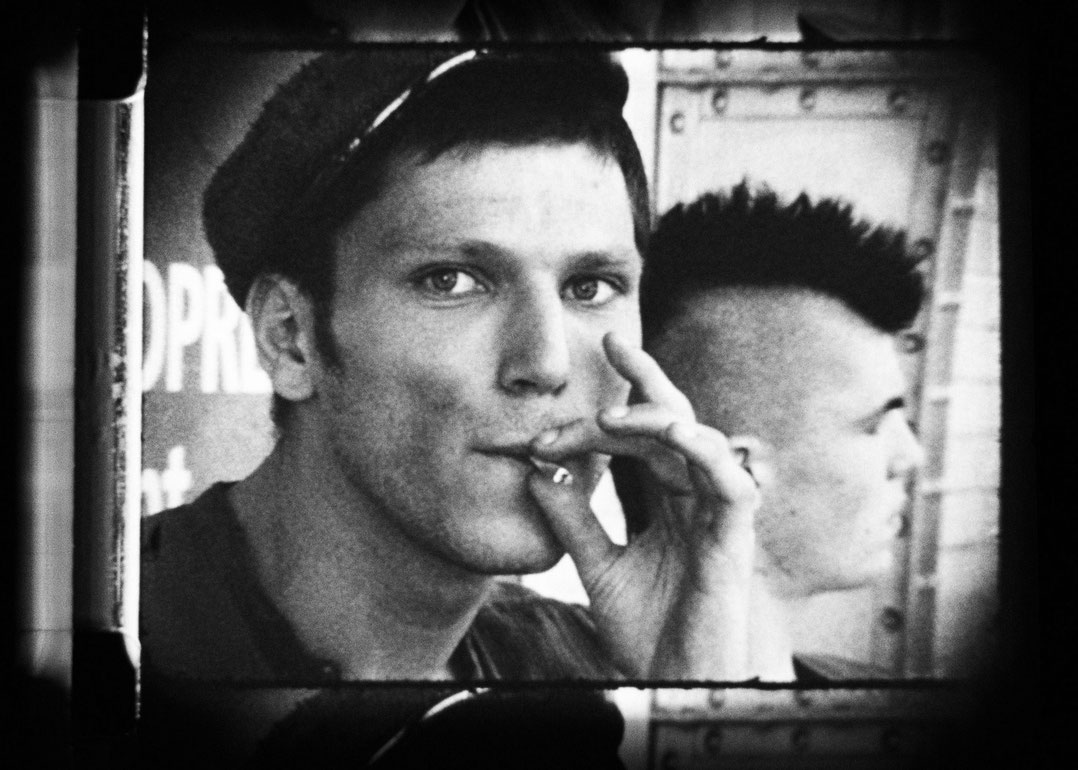Poetry for Sale
The first take shows a well-nigh classical writing scene: the writer sits in an open window and writes, in the background is a (neo-)Gothic church window. Standing next to him is his muse, who looks like an Aphrodite in a long, white dress with white flowers in knee-length hair—ironic reference to the traditional role of women in the life of the artist. Her lavish dance, however, seems to distract the poet more than inspire him. In a series of close-ups, Gröller illuminates the poet and the muse. Finally, the muse disappears and with that, the writing scene also ends.
A second episode follows, showing the poet in the Paris Métro, first on the platform, then in a subway car. He is trying to sell his texts here. Whereas the first episode, the writing scene, is filmed without sound, the second is marked by the poet’s full-throated, blatant promotion of the poems. He peddles his texts as goods on the market: first in French, then in English. But he encounters utter disinterest as apparent through the blank faces of the passengers who are, in addition, annoyed by the filming. In the end, the poet is shown sitting, smoking. When a young punk hugs him, he is all smiles.
In her short film, Friedl vom Gröller impressively contrasts the intimacy of the act of writing and the publicity of its presentation. The difficulty of the undertaking, selling poems in the subway, shows the difficulty of material survival for poets. The double breaking of the rules on which the film is based—both selling and filming are forbidden in the subway—exposes both poetry and filming as criminal acts, thus revealing the true status of poets and filmmakers.
(Nicole Streitler)
Translation: Lisa Rosenblatt

